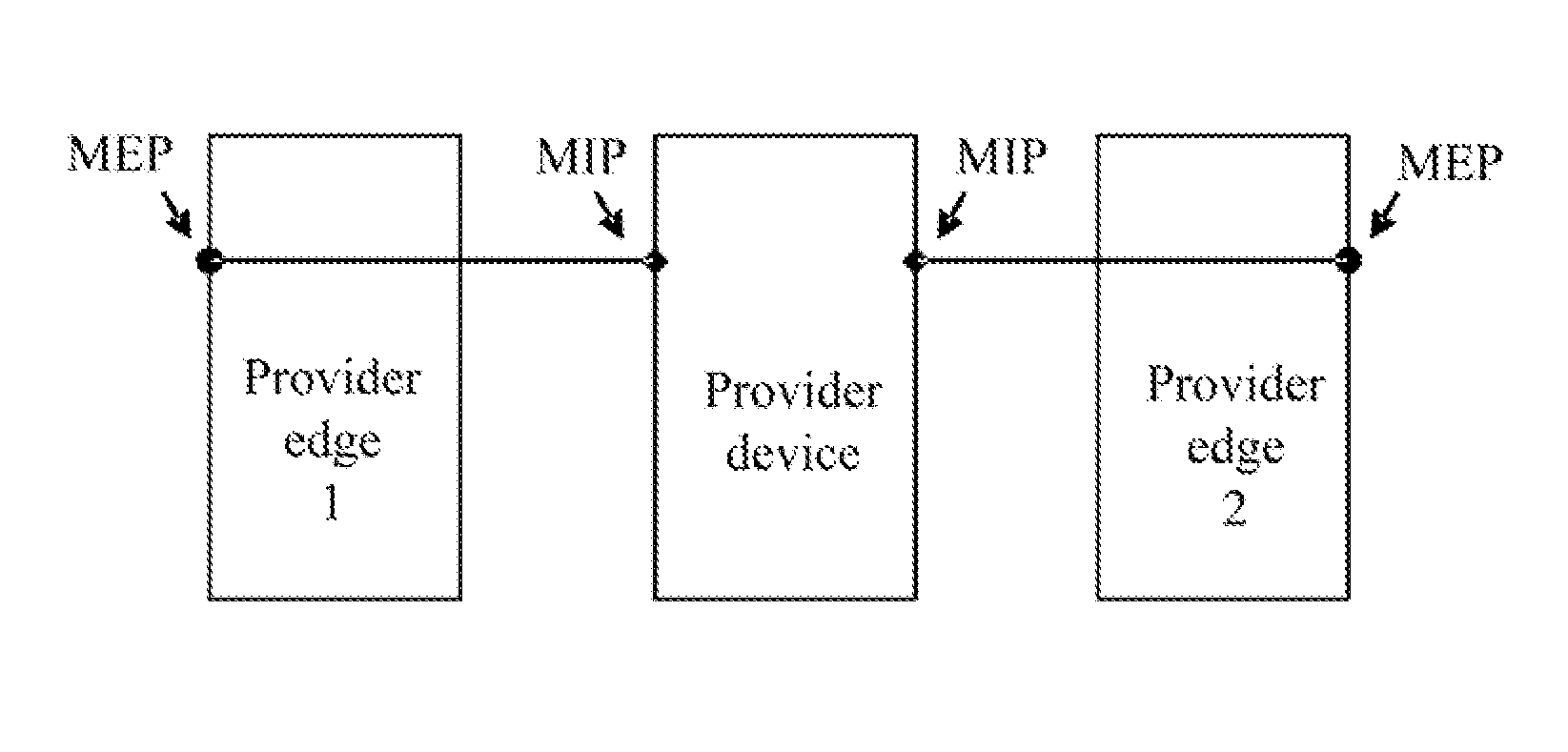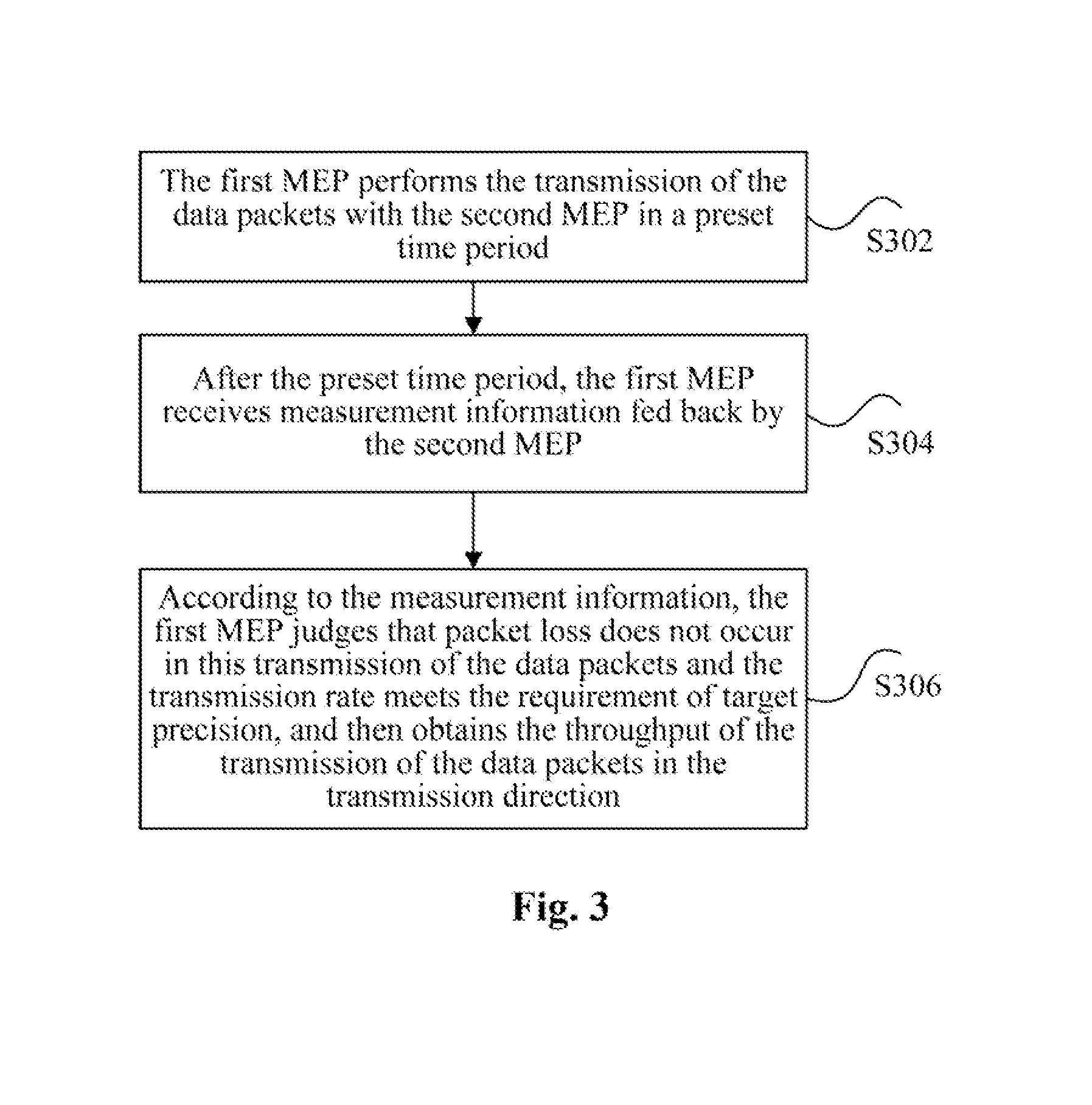Method for measuring throughput and maintenance end point
a technology of throughput and end point, applied in the field of data communication, can solve the problems of high measurement cost, no technical solution meeting the function requirement, and high measurement cost, and achieve the effect of saving measurement cost, high measurement cost, and complex operation and maintenan
- Summary
- Abstract
- Description
- Claims
- Application Information
AI Technical Summary
Benefits of technology
Problems solved by technology
Method used
Image
Examples
embodiment 1
[0047]FIG. 4 shows a flowchart of a method for measuring throughput according to the preferred embodiment 1 of the disclosure. The preferred embodiment 1 mainly describes the process of the measurement of two-way throughput in the MPLS-TP network. As shown in FIG. 4, the method for measuring two-way throughput comprises the following steps.
[0048]Step S402: a diagnostic test function of throughput measuring mode is started at the local MEP in the MPLS-TP network. Then the MEP is locked. That is to say, the MEP will prevent all service traffics from passing.
[0049]Step S404: except for being locked, the local MEP also sends a command lock message to the opposite MEP to lock the opposite MEP.
[0050]Step S406: after receiving the command lock message, the opposite MEP is also locked and returns a command lock reply message indicating the reception of the command and the success of locking.
[0051]Step S408: the measurement of two-way throughput is started at the local MEP. Before starting, ...
embodiment 2
[0079]FIG. 5 shows a flowchart of a method for measuring throughput according to the preferred embodiment 2 of the disclosure. The preferred embodiment 2 mainly describes the process of measurement of one-way throughput in the MPLS-TP network. As shown in FIG. 5, the method for measuring one-way throughput comprises the following steps.
[0080]Step S502: a diagnostic test function of throughput measuring mode is started at the local MEP in the MPLS-TP network. Then, the MEP is locked. That is to say, the MEP will prevent all service traffics from passing.
[0081]Step S504: except for being locked, the local MEP also sends a command lock message to the opposite MEP to lock the opposite MEP.
[0082]Step S506: after receiving the command lock message, the opposite MEP is also locked and returns a command lock reply message indicating the reception of the command and the success of locking.
[0083]Step S508: the measurement of one-way throughput is started at the local MEP. Before starting, it ...
PUM
 Login to View More
Login to View More Abstract
Description
Claims
Application Information
 Login to View More
Login to View More - R&D
- Intellectual Property
- Life Sciences
- Materials
- Tech Scout
- Unparalleled Data Quality
- Higher Quality Content
- 60% Fewer Hallucinations
Browse by: Latest US Patents, China's latest patents, Technical Efficacy Thesaurus, Application Domain, Technology Topic, Popular Technical Reports.
© 2025 PatSnap. All rights reserved.Legal|Privacy policy|Modern Slavery Act Transparency Statement|Sitemap|About US| Contact US: help@patsnap.com



